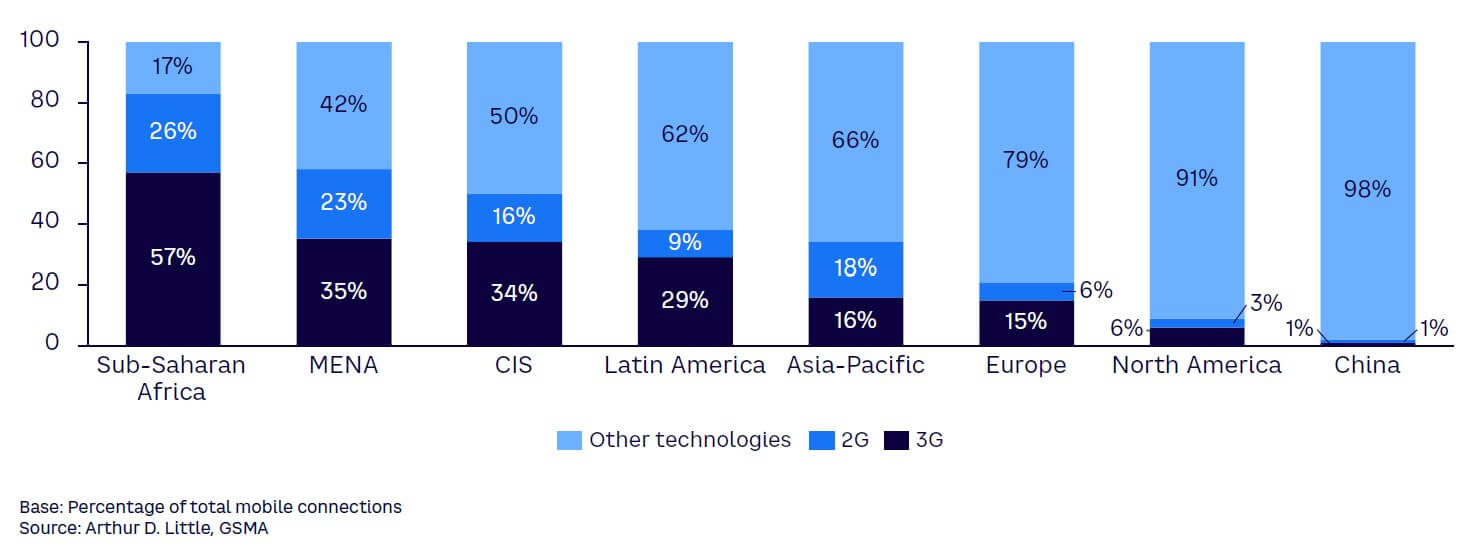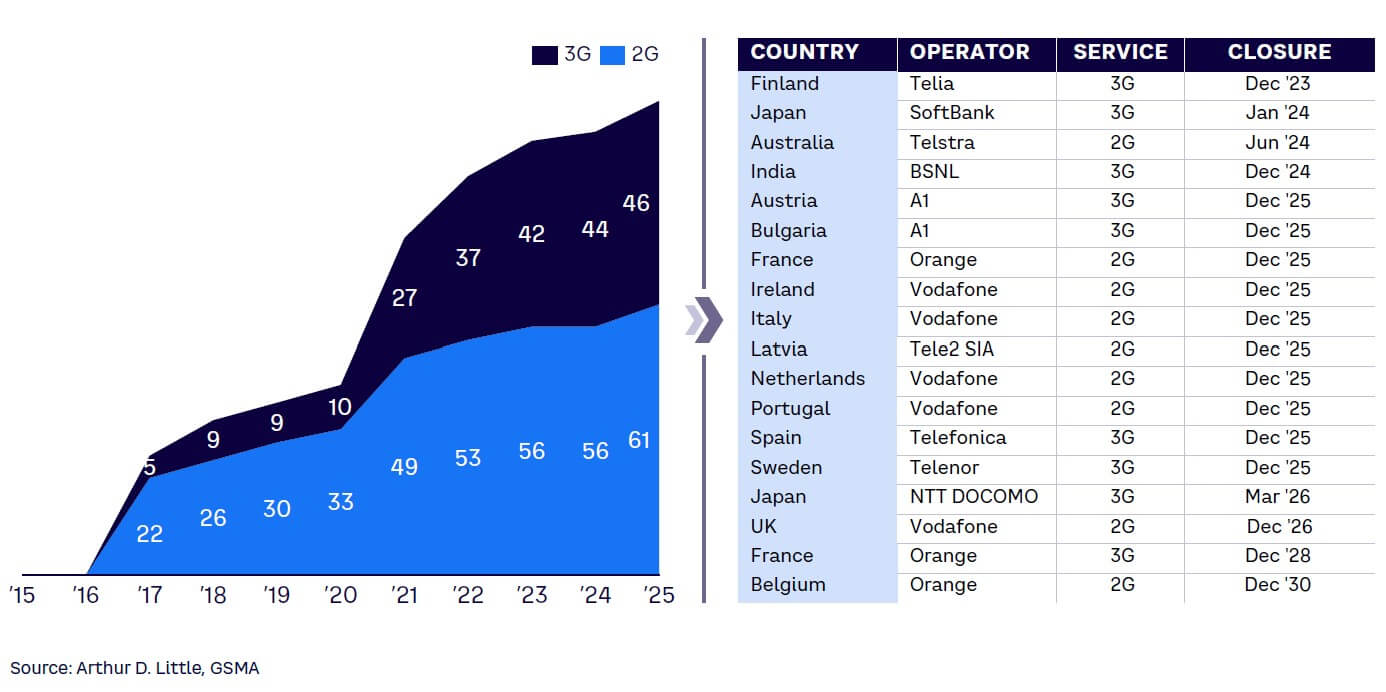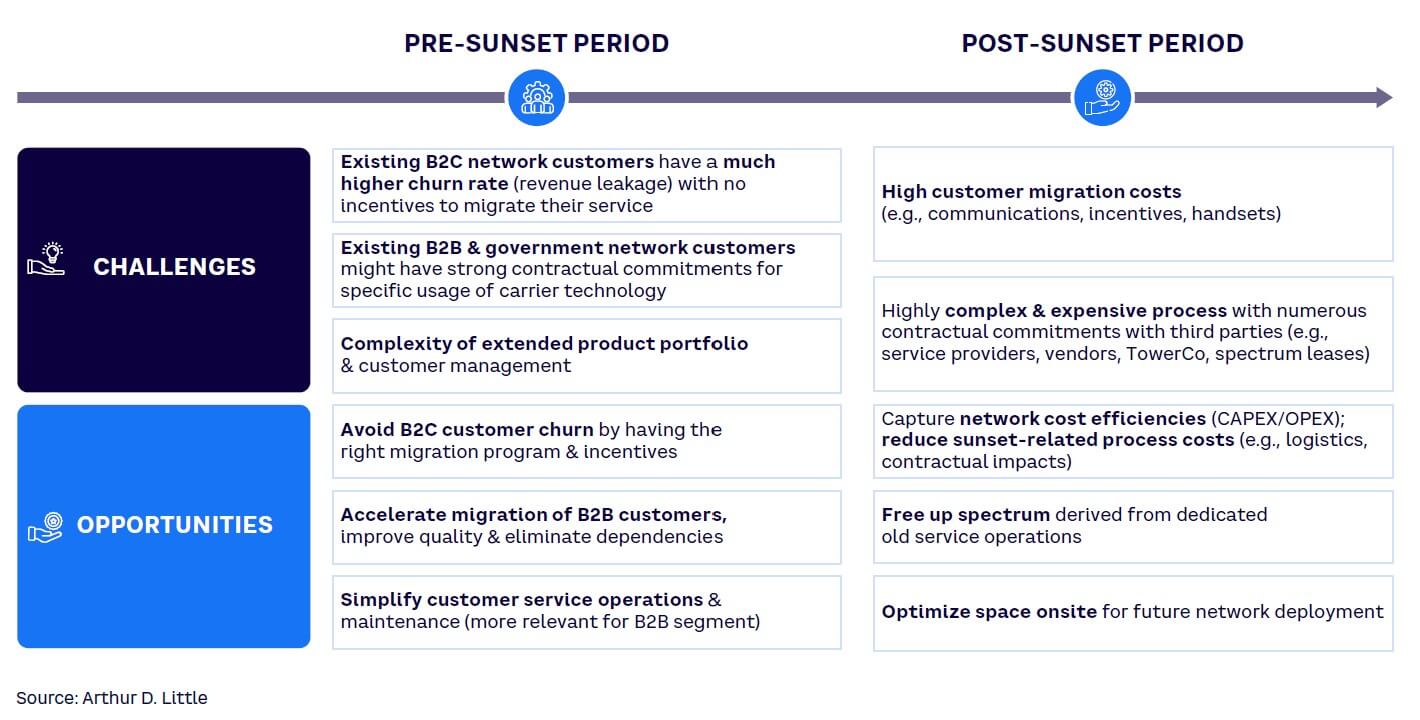The telecom industry is evolving rapidly, simultaneously witnessing the rise of new, advanced network transitions while current technology becomes obsolete. This Viewpoint explores how mobile telecom operators can effectively implement customer migration acceleration programs to optimize operations, migrate customers to advanced networks, and unlock new opportunities in a future-ready telecom landscape.
In the evolving landscape of technological advancement, traditional mobile infrastructure — namely 2G and 3G networks — is becoming increasingly obsolete. These networks are being systematically phased out across various global regions (see Figure 1). However, the pace of this transformation is not uniform. While developed nations have rapidly transitioned to more advanced networks, regions such as Africa and the Middle East still have considerable ground to cover in the journey to sunset outdated technology.

A confluence of factors, including economic disparities, infrastructure limitations, and regulatory challenges, has contributed to this digital divide. In many African countries, for instance, 2G and 3G networks continue to form the backbone of mobile connectivity, due to their wide coverage and the affordability of compatible devices. In parts of the Middle East, similar strides have been made toward adopting 4G and even 5G in urban areas, while rural and remote areas often remain reliant on 2G and 3G networks due to infrastructural and economic constraints.
However, this narrative is changing. The telecom industry in these regions is gradually awakening to the opportunities presented by more advanced networks like 5G. Operators, governments, and international organizations are collaborating to invest in infrastructure, build supportive regulatory frameworks, and raise awareness among consumers about the benefits of implementing newer technologies.
Nevertheless, the path toward sunset acceleration is long and complex. It requires a carefully orchestrated approach that not only focuses on technology upgrades but also considers the socioeconomic realities of each unique market. This includes ensuring affordable access to advanced services, developing digital skills among the population, and supporting local businesses in leveraging these technologies.
As we navigate this transformative era in telecommunications, the frequency of communicated shutdowns of networks is escalating (see Figure 2). Operators worldwide are increasingly acknowledging the need to optimize their network operations and drive cost efficiencies. And yet, while the intention to expedite the sunset of outdated infrastructure is gaining momentum, the timeline for this monumental shift remains protracted.

This extended timeline reflects the complexity of shutting down mobile networks and transitioning to advanced infrastructures. While the benefits are clear — enhanced network performance, cost reductions, improved customer experience, and the potential for new services and revenue streams — the process itself is multifaceted and challenging. Operators must manage multiple interdependent factors, including technical, regulatory, and customer-related elements. Technical considerations encompass the need to ensure network stability and the quality of service during the transition, while simultaneously deploying and scaling up newer technologies. Operators also need to comply with regulatory requirements regarding service continuity and customer communications, which often requires negotiation with authorities to align on shutdown timelines.
Most crucially, operators need to manage the impact of the new technology on their customers. This involves communicating the changes to them clearly and proactively, offering support as they shift to new services, and addressing any service disruptions or customer concerns that arise during the process. This customer-centric approach is vital in maintaining customer trust and satisfaction and in seizing the opportunity to upgrade customers to higher-value plans and services.
While the number of communicated shutdowns is rising, the journey toward a modern telecom landscape remains a marathon, not a sprint. It necessitates a strategic, methodical approach that balances the ambition to accelerate progress with the need to manage complexity and customer impact. As operators continue to navigate this path, their success will be defined not only by the pace of change, but also by their ability to maintain network quality, satisfy customers, and unlock new opportunities in the process.
A customer migration acceleration program strategically phases out the use of legacy networks and expedites advanced technology adoption. It can serve as a significant catalyst for a telecom network operator, ushering in transformative operational, financial, and customer-centric benefits (see Figure 3). By hastening the process of closing old networks to make room for newer technologies, operators can reduce the burdensome maintenance costs that accompany outdated systems. The resulting financial efficiency allows for the reallocation of resources toward innovative, advanced infrastructure, thereby enhancing network performance and opening doors for cutting-edge services.
Furthermore, advanced networks offer a superior user experience: improved connectivity speed, lower latency, and increased reliability, which strengthens customer satisfaction and loyalty.

Incorporating energy efficiency into new networks as part of the transition process highlights the operator’s commitment to sustainability, reinforcing its position as a responsible steward in a world increasingly conscious of environmental impacts. Thus, a well-executed customer migration acceleration program puts operators in a position to thrive in the swiftly changing telecom industry, paving the way for operational excellence, cost savings, elevated customer experiences, and environmental stewardship.
A customer migration “playbook” offers a concise approach to facilitating customer migration and expediting the switch to new technologies. First, a thorough planning stage establishes the roadmap, balancing technical, financial, and customer considerations. Next, a proactive communications strategy ensures customers are well-informed, supported, and encouraged to transition to advanced services. Finally, executing the shutdown involves meticulous management to ensure service continuity and to address any emerging customer concerns. As Figure 4 illustrates, a playbook can provide operators with a structured, customer-centric blueprint to navigate the complex journey of future network customer migration acceleration as technology evolves: